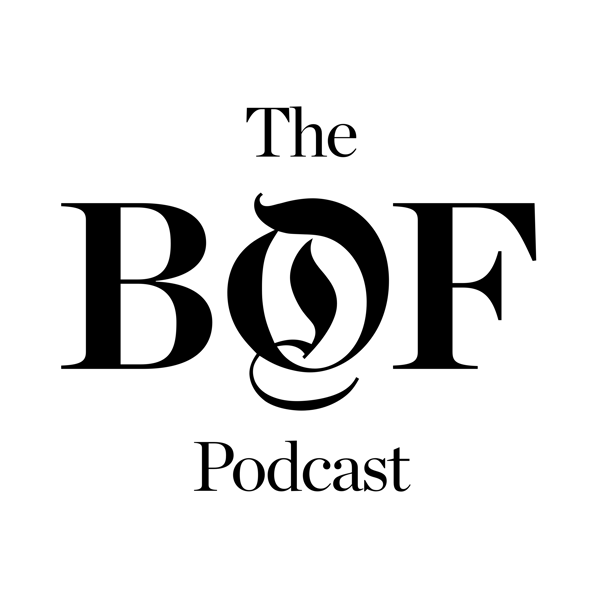Can Tariffs Really Revive 'Made in USA' Fashion?
The Business of Fashion Podcast
The Business of Fashion
4.6 • 770 Ratings
🗓️ 15 April 2025
⏱️ 28 minutes
🧾️ Download transcript
Summary
In early April, President Donald Trump announced an unprecedented wave of tariffs, imposing duties as high as 145 percent on imports from China. Among the rationales offered were the prospect of a US manufacturing renaissance.
The American fashion sector – heavily reliant on overseas production, particularly in China – now faces significant disruption. Some brands are adapting quickly, leveraging their domestic operations and leaning into a ‘Made in USA’ identity. Others are reevaluating their reliance on China as their primary sourcing destination. But the prospect of a mass return of garment manufacturing jobs remains a remote possibility, most economists and fashion industry experts say.
In this episode of The Debrief, BoF correspondents Malique Morris and Marc Bain join executive editor Brian Baskin and senior correspondent Sheena Butler-Young to assess whether the dream of American-made fashion is any closer to reality.
Key Insights:
- The ‘Made in USA’ dream remains out of reach due to the lack of US manufacturing infrastructure. "The infrastructure just literally isn't here," says Bain. "Even if you use US grown cotton, most of the time that cotton is shipped out of the US to be spun into yarn and woven into fabric somewhere else. These are all sorts of things that we just don't have here. It's been lost over decades and it would take decades to get it back.”
- Brands that already manufacture domestically are seeing success from marketing craftsmanship, experience and emotional value. The outdoor clothing company Filson, for example, offers walking tours around their manufacturing facility that shares a space with their Seattle headquarters. “Fashion is already an emotional purchase, and consumers do care about the story behind a brand. That's why brand marketing is so important for building the label,” says Morris. “This is another way to tap into that. It's storytelling, not nationalism.”
- Whereas the US has a lack of infrastructure for manufacturing, China is in the exact opposite position. Small brands might have their supply chain concentrated in one geographical area and are especially vulnerable to tariff changes. “If that area happens to be China and suddenly there's this giant more than doubling of tariffs, you are in serious trouble,” says Bain.
- Although cheap overseas clothing companies like Shein and Quince will now be subject to increased duties, consumers won’t abandon cheap fashion overnight. “Even if [middle-class shoppers] are not going to buy American-made brands that are significantly more expensive, maybe they'll go second-hand, maybe they'll vintage,” says Morris. “I think the hope here is that people will just get conditioned out of the idea that they can get $2 jeans and a $10 dress.”
Additional Resources:
- How Made-in-America Brands Turn Tariff Turmoil Into Opportunity | BoF
- Why ‘Made in America’ Is Still a Fashion Fantasy | BoF
- Unravelling the Myth of ‘Made in America’ | BoF
Hosted on Acast. See acast.com/privacy for more information.
Transcript
Click on a timestamp to play from that location
| 0:00.0 | Hello and welcome to the Deep Brief from the Business of Fashion, where each week we delve |
| 0:11.9 | into our most popular B-O-F professional stories with the correspondence who created them. |
| 0:16.8 | I'm senior correspondent Sheena Butler Young. |
| 0:19.4 | And I'm executive editor Brian Baskin. |
| 0:22.1 | The Trump administration has offered up many reasons for imposing tariffs as high as 145% on goods imported from China. |
| 0:31.1 | The two most relevant to fashion are that tariffs will revive American manufacturing and that they will stop a flood of cheap Chinese |
| 0:38.2 | imports from undercutting American businesses. Joining us today are B-O-F correspondents, Malik |
| 0:43.7 | Morris and Mark Bain, who have been looking into whether either of those theories are becoming |
| 0:47.6 | reality. Hi, Mark and Malik. Welcome to the debrief podcast. Hi, Sheena. Hi, Shina. Hi, Brian. |
| 0:54.2 | So let's start with the basics. |
| 0:55.6 | Malik, can you remind us what exactly are the tariffs that the Trump administration has |
| 0:59.2 | proposed? |
| 0:59.9 | And how are those affecting the fashion industry right now? |
| 1:03.0 | Yeah, it was actually been a bit of a roller coaster on Trump's Liberation Day on April |
| 1:07.2 | 3rd as I'm pretty short. |
| 1:08.3 | Underplaying it there, Malif. |
| 1:09.5 | Underplaying it there, Malief. Underplaying it. But, you know, then Trump showed a chart what tariffs he would impose on goods imported from other countries. |
| 1:15.5 | And not only were they astronomically higher than anyone expected. |
| 1:19.2 | I mean, we were talking about like 46% for goods coming from Vietnam, 37% for Bangladesh. |
| 1:24.1 | But they were targeting some of fashion industries go-to manufacturing hubs. |
| 1:28.5 | And like, no one was spared, really. |
| 1:30.2 | You know, even the EU was facing 20% tariffs, which would have curbs spending in the U.S., |
... |
Please login to see the full transcript.
Disclaimer: The podcast and artwork embedded on this page are from The Business of Fashion, and are the property of its owner and not affiliated with or endorsed by Tapesearch.
Generated transcripts are the property of The Business of Fashion and are distributed freely under the Fair Use doctrine. Transcripts generated by Tapesearch are not guaranteed to be accurate.
Copyright © Tapesearch 2025.

